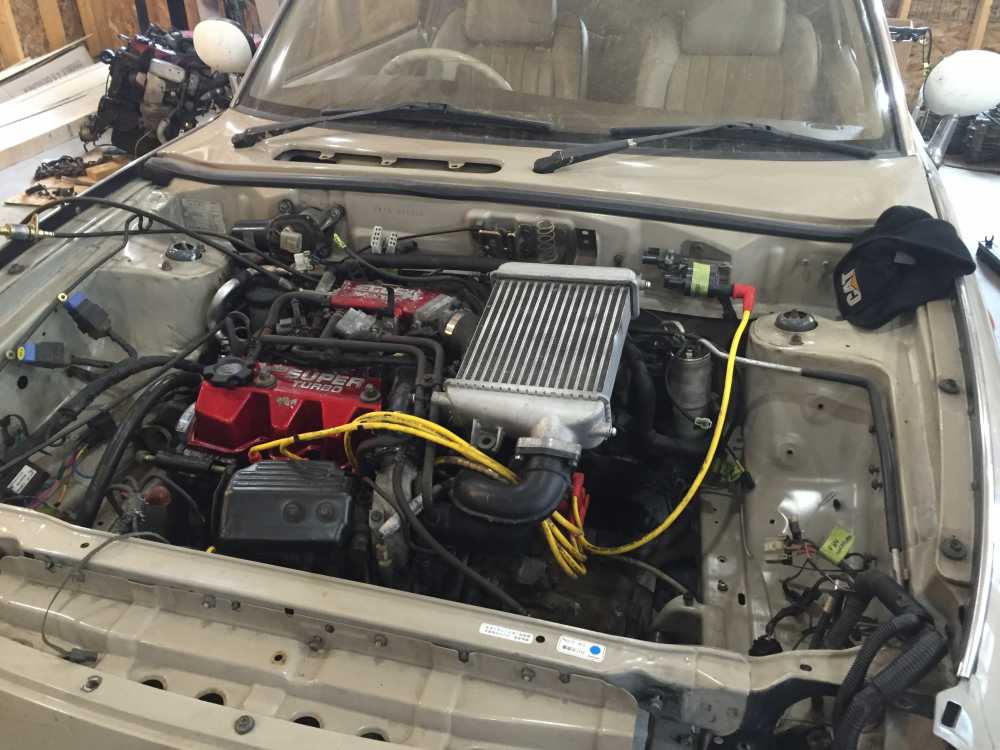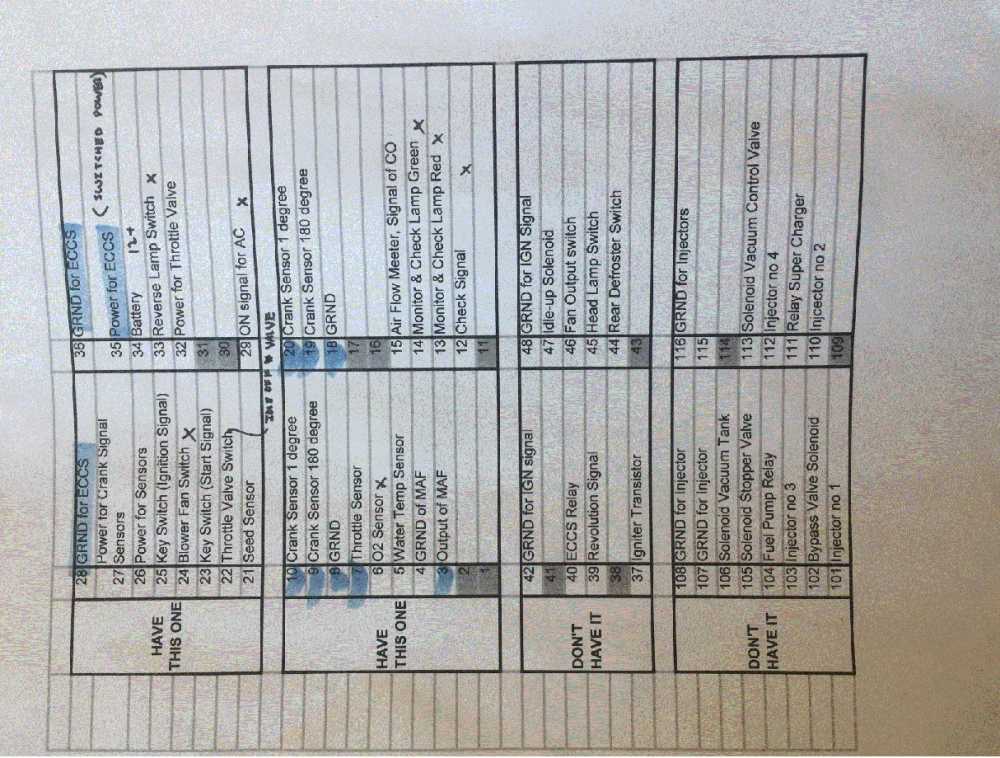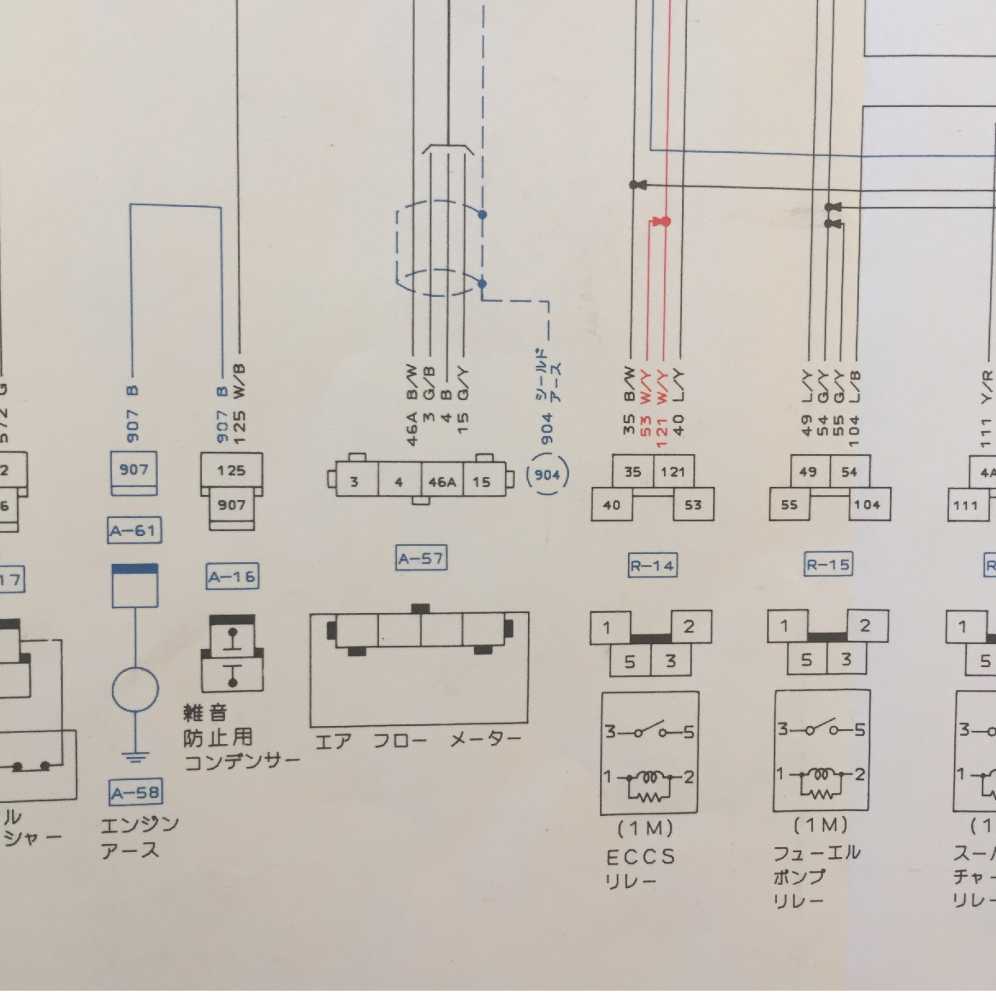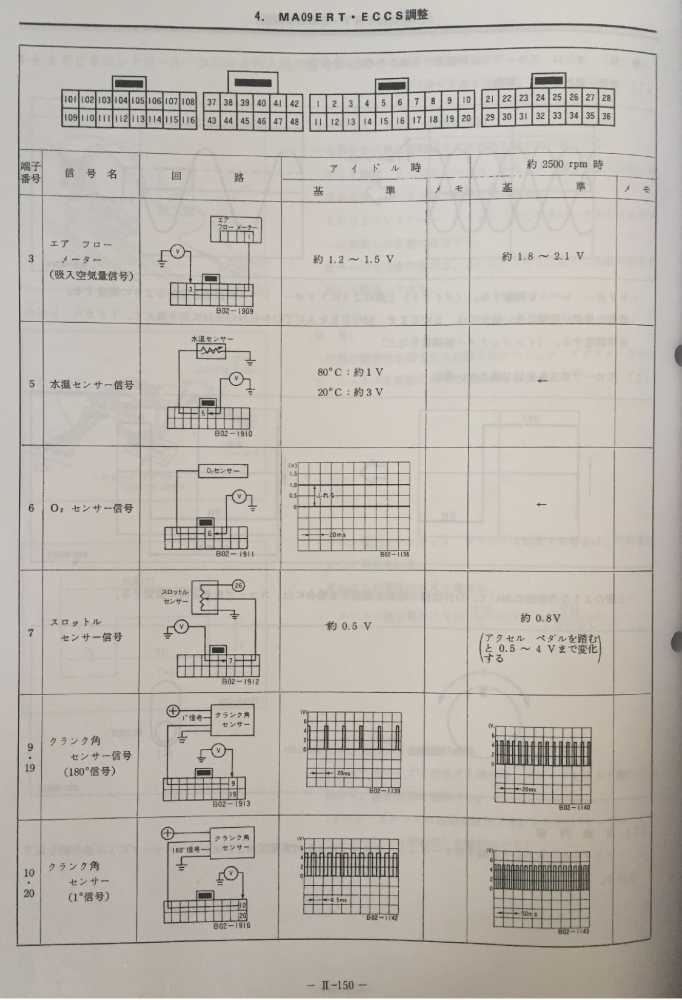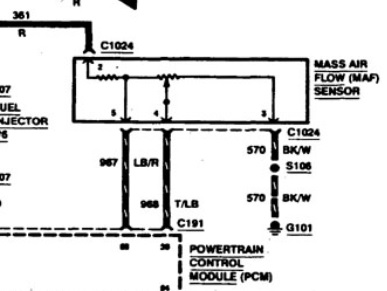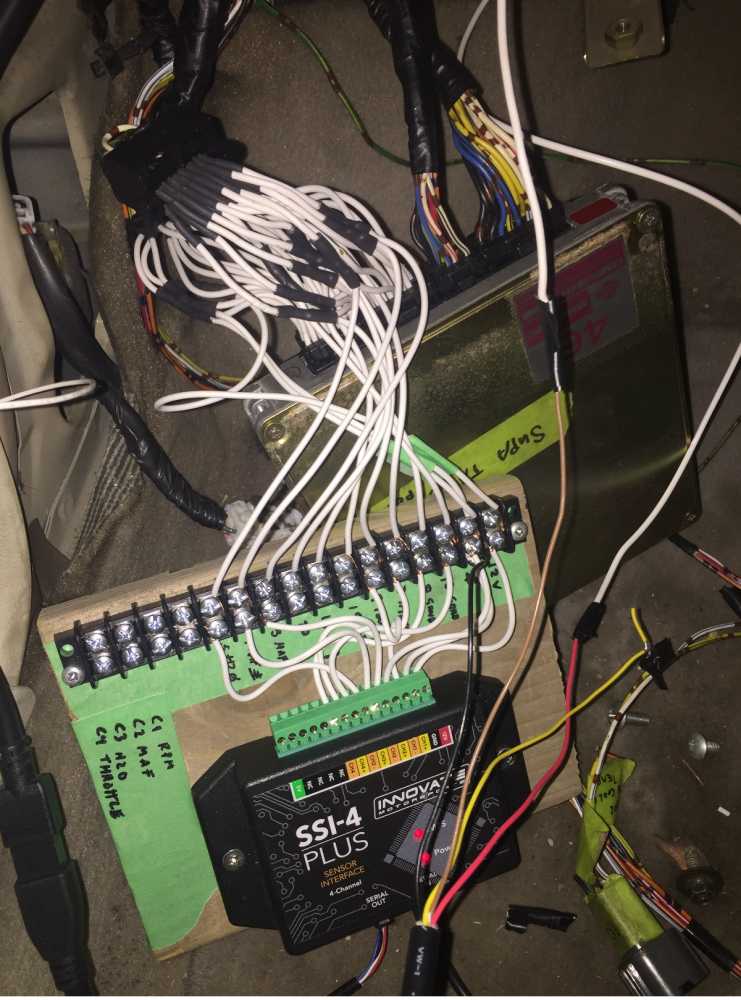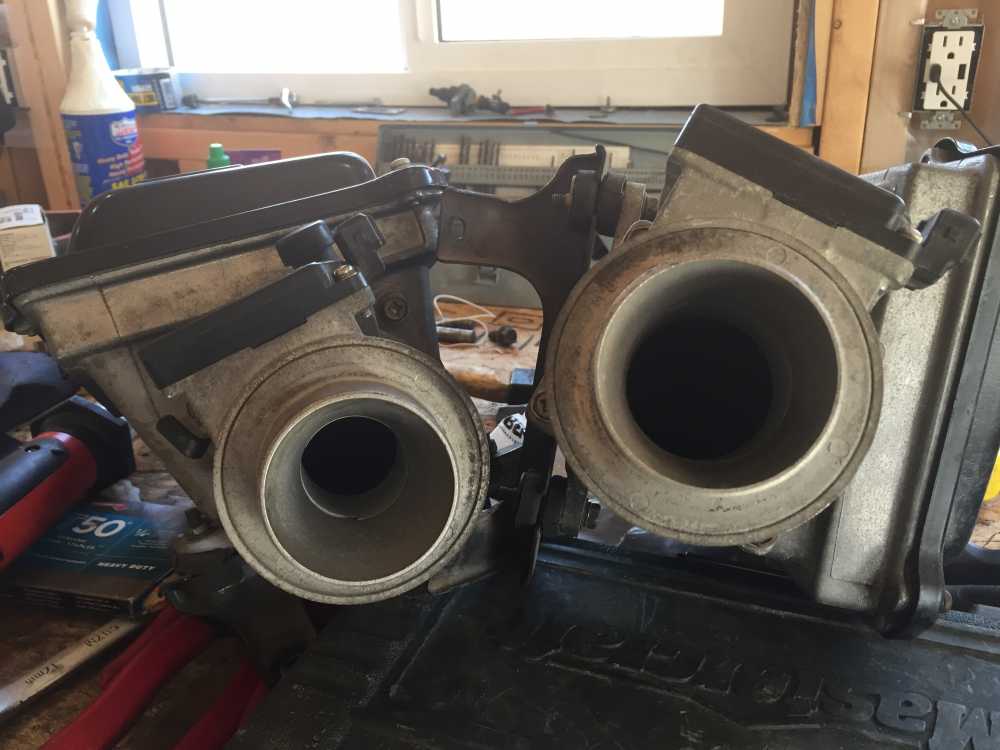Help us help you. By posting the year, make, model and engine near the beginning of your help request, followed by the symptoms (no start, high idle, misfire etc.) Along with any prevalent Diagnostic Trouble Codes, aka DTCs, other forum members will be able to help you get to a solution more quickly and easily!
Nissan Figaro Engine Swap
- Quatermass
-
Topic Author
- Offline
- New Member
-

Less
More
- Posts: 8
- Thank you received: 0
8 years 8 months ago #8693
by Quatermass
Nissan Figaro Engine Swap was created by Quatermass
Hello Everyone,
I have a bit of a conundrum with an engine swap that I put together. I have a Nissan Figaro that I've swapped a Nissan MA09ERT last spring. The car is a supercharged and turbocharged engine from the late 80s that is is computer controlled. I have used all of the factory computers and wiring to keep the swap as straight forward as possible. The problem I'm having is the following issues.
-rough idle
-hesitation on acceleration
-rich exhaust 10:1 with a wide band 02 sensor
- engine dies on a snap throttle
-high voltage on the MAF circuit 1.75 Volts when it should be 1.0-1.5 volts
I would think the engine would be running lean as these cars are prone to intake leaks but the exhaust is running super rich. I cannot hook into the factory computer since it's pre OBD II. Instead I have an innovate O2 sensor with their SSI data logger hooked up to read the throttle, MAF, Water temp and the O2. Ive read through Scanner Danners book but I can't really find anything directly related to my issue. If have all of the factory diagrams and manuals (unfortunately they are all in 日本). If anyone has any ideas on what would be the culprit let me know. If any additional information is required I am prettt familiar with the car and I can attach any of the drawings. The engine pic is below.
I have a bit of a conundrum with an engine swap that I put together. I have a Nissan Figaro that I've swapped a Nissan MA09ERT last spring. The car is a supercharged and turbocharged engine from the late 80s that is is computer controlled. I have used all of the factory computers and wiring to keep the swap as straight forward as possible. The problem I'm having is the following issues.
-rough idle
-hesitation on acceleration
-rich exhaust 10:1 with a wide band 02 sensor
- engine dies on a snap throttle
-high voltage on the MAF circuit 1.75 Volts when it should be 1.0-1.5 volts
I would think the engine would be running lean as these cars are prone to intake leaks but the exhaust is running super rich. I cannot hook into the factory computer since it's pre OBD II. Instead I have an innovate O2 sensor with their SSI data logger hooked up to read the throttle, MAF, Water temp and the O2. Ive read through Scanner Danners book but I can't really find anything directly related to my issue. If have all of the factory diagrams and manuals (unfortunately they are all in 日本). If anyone has any ideas on what would be the culprit let me know. If any additional information is required I am prettt familiar with the car and I can attach any of the drawings. The engine pic is below.
Please Log in or Create an account to join the conversation.
- Tyler
-

- Offline
- Moderator
-

- Full time HACK since 2012
Less
More
- Posts: 6064
- Thank you received: 1531
8 years 8 months ago #8702
by Tyler
Replied by Tyler on topic Nissan Figaro Engine Swap
Hey Quartermass, welcome! I thought I knew Nissan engine codes from when I owned a 240SX, but your MA09 sent me for a loop. :lol: :blush: Super clean engine bay. 
Do you have confidence in the 1.0 - 1.5V spec you quoted? I'm assuming that number is at idle. If so, then we can pursue the MAF and it's wiring directly. Besides an overreporting sensor, we're also looking for a high resistance sensor ground, causing the signal to stay abnormally high.
For our reference, is this MAF a conventional analog hot wire design, or a VAF? Either way, we're interested in voltage measurements on the MAF signal, 5V reference and ground at the sensor, plugged in and idling. 100mV or less on the sensor ground is important.
Feel free to post up any diagrams you have of this system, and we can help you ID the wires to test.
Do you have confidence in the 1.0 - 1.5V spec you quoted? I'm assuming that number is at idle. If so, then we can pursue the MAF and it's wiring directly. Besides an overreporting sensor, we're also looking for a high resistance sensor ground, causing the signal to stay abnormally high.
For our reference, is this MAF a conventional analog hot wire design, or a VAF? Either way, we're interested in voltage measurements on the MAF signal, 5V reference and ground at the sensor, plugged in and idling. 100mV or less on the sensor ground is important.
Feel free to post up any diagrams you have of this system, and we can help you ID the wires to test.
Please Log in or Create an account to join the conversation.
- Quatermass
-
Topic Author
- Offline
- New Member
-

Less
More
- Posts: 8
- Thank you received: 0
8 years 8 months ago #8726
by Quatermass
Replied by Quatermass on topic Nissan Figaro Engine Swap
Tyler,
Thanks for the quick reply on this. I am also suspicious of the ground wire on the MAF sensor. When I got home from the weekend yesterday I checked the ground voltage b/w the chassis and the negative battery terminal. I was getting 0.8V which lead me to believe my ground wire wasn't attached to the chassis correctly. I cleaned it up and now I have 0.01V across the battery ground and the frame. Unfortunately that did not resolve the high voltage on the MAF signal wire or the poor running conditions.
I checked the wiring diagram and verified that the ground wire for the MAF sensor is tied directly to the ECCS and not a separate ground connection. The model of MAF is a Hitachi 22680 30F00 AFH45-31 which is a four wire MAF sensor.
As you mentioned below, the voltages were measure at idle speeds which in my case are around 500 RPM which is below the factory set 750 RPM. The voltage values from the engine manual specify that the MAF sensor wire should be 1.2-1.5V ( my mistake last time) and I'm still reading 1.6-1.7V.
I have attached some wiring diagrams, the MAF sensor model, the Engine Manual page detailing the voltage requirements. I might have to use a second post to dump the wiring diagram and it's quite detailed and large.
Let me know what you think I should check next. I really don't want to ground out the MAF ground as I'm worried about it cooking something on the ECM.
Thanks for the quick reply on this. I am also suspicious of the ground wire on the MAF sensor. When I got home from the weekend yesterday I checked the ground voltage b/w the chassis and the negative battery terminal. I was getting 0.8V which lead me to believe my ground wire wasn't attached to the chassis correctly. I cleaned it up and now I have 0.01V across the battery ground and the frame. Unfortunately that did not resolve the high voltage on the MAF signal wire or the poor running conditions.
I checked the wiring diagram and verified that the ground wire for the MAF sensor is tied directly to the ECCS and not a separate ground connection. The model of MAF is a Hitachi 22680 30F00 AFH45-31 which is a four wire MAF sensor.
As you mentioned below, the voltages were measure at idle speeds which in my case are around 500 RPM which is below the factory set 750 RPM. The voltage values from the engine manual specify that the MAF sensor wire should be 1.2-1.5V ( my mistake last time) and I'm still reading 1.6-1.7V.
I have attached some wiring diagrams, the MAF sensor model, the Engine Manual page detailing the voltage requirements. I might have to use a second post to dump the wiring diagram and it's quite detailed and large.
Let me know what you think I should check next. I really don't want to ground out the MAF ground as I'm worried about it cooking something on the ECM.
Please Log in or Create an account to join the conversation.
- Quatermass
-
Topic Author
- Offline
- New Member
-

Less
More
- Posts: 8
- Thank you received: 0
8 years 8 months ago #8727
by Quatermass
Replied by Quatermass on topic Nissan Figaro Engine Swap
Hopefully I can get the whole wiring diagram here.
The MAF sensor is in the lower left hand corner. In Katakana it's tagged as エア フロー メーター (EA FURO MEETAA). Hopefully that helps out.
The MAF sensor is in the lower left hand corner. In Katakana it's tagged as エア フロー メーター (EA FURO MEETAA). Hopefully that helps out.
Please Log in or Create an account to join the conversation.
- Tyler
-

- Offline
- Moderator
-

- Full time HACK since 2012
Less
More
- Posts: 6064
- Thank you received: 1531
8 years 8 months ago - 8 years 8 months ago #8746
by Tyler
Replied by Tyler on topic Nissan Figaro Engine Swap
Nice job finding that resistive ground.  Still something worth fixing, even though it didn't help with the MAF issue.
Still something worth fixing, even though it didn't help with the MAF issue.
Hey, a four wire MAF, we can work with this. Thanks for posting those diagrams, too. The first ones were great, but unfortunately that second one is too pixelated.
Thanks for posting those diagrams, too. The first ones were great, but unfortunately that second one is too pixelated.  Anyway, I think I have a pretty good idea of how these sensors are wired. Here's an example of a similar setup on a Ford four wire MAF:
Anyway, I think I have a pretty good idea of how these sensors are wired. Here's an example of a similar setup on a Ford four wire MAF:
In short, we're looking for main feed (12V or 5V, not sure which at this point), a MAF signal (will change with throttle, of course), and two grounds. Both those grounds should have less that 100mV on them at any given time.
I can't tell you which wire does which, exactly, but it may not matter. You can check all four wires one at a time, and note the voltages. If you find the voltages as described above, then there's no ground issue. If you find differing results, then we'll need to dig deeper into the MAF wiring. Just on a guess, I'm gonna say that the black/white wire is the main feed, since all the other wires are covered by a shield.
For reference, ScannerDanner covers testing a similar MAF sensor in this video:
No need to worry about cooking an ECM doing this. If you're using a DVOM on the DC voltage range, and you're careful about backprobing the connector (you'll have to pull that boot around the wires back), then there's no danger in damaging anything.
If you're using a DVOM on the DC voltage range, and you're careful about backprobing the connector (you'll have to pull that boot around the wires back), then there's no danger in damaging anything.
Hey, a four wire MAF, we can work with this.
In short, we're looking for main feed (12V or 5V, not sure which at this point), a MAF signal (will change with throttle, of course), and two grounds. Both those grounds should have less that 100mV on them at any given time.
I can't tell you which wire does which, exactly, but it may not matter. You can check all four wires one at a time, and note the voltages. If you find the voltages as described above, then there's no ground issue. If you find differing results, then we'll need to dig deeper into the MAF wiring. Just on a guess, I'm gonna say that the black/white wire is the main feed, since all the other wires are covered by a shield.
For reference, ScannerDanner covers testing a similar MAF sensor in this video:
No need to worry about cooking an ECM doing this.
Last edit: 8 years 8 months ago by Tyler.
Please Log in or Create an account to join the conversation.
- Quatermass
-
Topic Author
- Offline
- New Member
-

Less
More
- Posts: 8
- Thank you received: 0
8 years 8 months ago - 8 years 8 months ago #8752
by Quatermass
Replied by Quatermass on topic Nissan Figaro Engine Swap
Tyler,
I watched the video and as always it was a very practical example. So after that, I put on my overalls to take some readings from the MAF sensor. This is what I got when the car was idling
G/Y wire, PIN 15, 3.84V
B/W wire, Pin 46A, 13.46V
B wire, Pin 4, 0.16 V
G/B wire, Pin 3, 1.31-1.46V
So the voltage reading at the MAF sensor itself is within spec (probably a bit high still as the idle speed is 300 RPM too low). I went back to the pins I was reading inside of the car to see what Pin 3 was reading by the ECM and the voltage was still around 1.6. As I've mentioned previously, I've installed an Innovate O2 sensor with their SSI data logger to pull out voltage values and check the AFR. You can see below that I've built a set of breakout cables to easily test the voltages. I'm still thinking the ECM is reading a high airflow which is giving me my rich O2, poor idle which makes the car inoperable. Let me know what you think of the sensor readings. Thanks again.
I watched the video and as always it was a very practical example. So after that, I put on my overalls to take some readings from the MAF sensor. This is what I got when the car was idling
G/Y wire, PIN 15, 3.84V
B/W wire, Pin 46A, 13.46V
B wire, Pin 4, 0.16 V
G/B wire, Pin 3, 1.31-1.46V
So the voltage reading at the MAF sensor itself is within spec (probably a bit high still as the idle speed is 300 RPM too low). I went back to the pins I was reading inside of the car to see what Pin 3 was reading by the ECM and the voltage was still around 1.6. As I've mentioned previously, I've installed an Innovate O2 sensor with their SSI data logger to pull out voltage values and check the AFR. You can see below that I've built a set of breakout cables to easily test the voltages. I'm still thinking the ECM is reading a high airflow which is giving me my rich O2, poor idle which makes the car inoperable. Let me know what you think of the sensor readings. Thanks again.
Last edit: 8 years 8 months ago by Quatermass. Reason: The picture was not included.
Please Log in or Create an account to join the conversation.
- Tyler
-

- Offline
- Moderator
-

- Full time HACK since 2012
Less
More
- Posts: 6064
- Thank you received: 1531
8 years 8 months ago #8774
by Tyler
Replied by Tyler on topic Nissan Figaro Engine Swap
Thanks for getting back to us with voltages, sir!  It's interesting... the MAF is actually reading lower than what the PCM is seeing. :huh: I dunno that I'm thrilled about the 160 mV reading you saw on pin 4 of the MAF, but that still doesn't explain where the extra voltage is coming from.
It's interesting... the MAF is actually reading lower than what the PCM is seeing. :huh: I dunno that I'm thrilled about the 160 mV reading you saw on pin 4 of the MAF, but that still doesn't explain where the extra voltage is coming from.
As a side note, you could try adding a ground directly from the MAF to battery negative with a jumper if you wanted, just to see if the signal voltage comes down further. Again, doesn't explain the extra voltage, but might be worth pursuing at some point.
Just for clarity, where does this data logger fit in the wiring, exactly? PCM connector -> data logger -> PCM? Wondering if you'd find the lower MAF signal reading BEFORE the data logger, but higher after.
As a side note, you could try adding a ground directly from the MAF to battery negative with a jumper if you wanted, just to see if the signal voltage comes down further. Again, doesn't explain the extra voltage, but might be worth pursuing at some point.
Just for clarity, where does this data logger fit in the wiring, exactly? PCM connector -> data logger -> PCM? Wondering if you'd find the lower MAF signal reading BEFORE the data logger, but higher after.
The following user(s) said Thank You: Quatermass
Please Log in or Create an account to join the conversation.
- Quatermass
-
Topic Author
- Offline
- New Member
-

Less
More
- Posts: 8
- Thank you received: 0
8 years 8 months ago #8831
by Quatermass
Replied by Quatermass on topic Nissan Figaro Engine Swap
Tyler,
Thanks for all of the input. I actually fixed the problem last night. Tuesday night I was going to check the old MAF sensor from the original motor and noticed that it had a different model number (the reason I never used it). I called Hitachi's office in LA yesterday to see if they had any access to new MAF units or any documentation and the guy on the phone mentioned that the model numbers AFHXX dictates the housing size so in my case, I should be running a 45mm housing. Anyhow, that jogged my brain into remembering that I switched housings when I did the installation but I kept the sensor for the new engine. As you can see below, the Figaro housing is 35mm and the ST one is 45mm so the reason I was getting super high readings was the air velocity through the housing was higher than expected. In any case I appreciate the help and you can mark my issue fixed. The car still idles really poorly and the intercooler pops off during boost but those are issues I can track down now that it's a driving car. Thanks a bunch.
Thanks for all of the input. I actually fixed the problem last night. Tuesday night I was going to check the old MAF sensor from the original motor and noticed that it had a different model number (the reason I never used it). I called Hitachi's office in LA yesterday to see if they had any access to new MAF units or any documentation and the guy on the phone mentioned that the model numbers AFHXX dictates the housing size so in my case, I should be running a 45mm housing. Anyhow, that jogged my brain into remembering that I switched housings when I did the installation but I kept the sensor for the new engine. As you can see below, the Figaro housing is 35mm and the ST one is 45mm so the reason I was getting super high readings was the air velocity through the housing was higher than expected. In any case I appreciate the help and you can mark my issue fixed. The car still idles really poorly and the intercooler pops off during boost but those are issues I can track down now that it's a driving car. Thanks a bunch.
Please Log in or Create an account to join the conversation.
- Tyler
-

- Offline
- Moderator
-

- Full time HACK since 2012
Less
More
- Posts: 6064
- Thank you received: 1531
8 years 8 months ago #8835
by Tyler
Replied by Tyler on topic Nissan Figaro Engine Swap
:lol: Nice! I'm not complaining - a fix is a fix.  Way to catch the difference in parts numbers.
Way to catch the difference in parts numbers.
I guess we were kinda on the right track? 'Cause if we didn't find any problems in the data logger wiring, I was gonna suggest replacing the MAF. I'm still confused about the voltage readings you saw, but I'm not one to argue with results.
So, your wide and sensor reports and OK mixture with the rough idle? Just thinking of where to go next with the idle issue.
I guess we were kinda on the right track? 'Cause if we didn't find any problems in the data logger wiring, I was gonna suggest replacing the MAF. I'm still confused about the voltage readings you saw, but I'm not one to argue with results.
So, your wide and sensor reports and OK mixture with the rough idle? Just thinking of where to go next with the idle issue.
Please Log in or Create an account to join the conversation.
- Quatermass
-
Topic Author
- Offline
- New Member
-

Less
More
- Posts: 8
- Thank you received: 0
7 years 7 months ago #20815
by Quatermass
Replied by Quatermass on topic Nissan Figaro Engine Swap
Hello Everyone,
After a bit of a hiatus to clean and finish my garage coupled with a very long winter, I've gotten back on the Figaro to get it up and running with the SuperTurbo engine. I had it running pretty decent last year before it went into hibernation. The reason I parked it was the following.
-Overboost on the turbo system
-Boost was cycling between 9psi and 23psi.
To determine what the problem was, I tested out the wastegate with a pressure pump and it opens around 9-12 psi which is the boost pressure the car should be running at. Some local guys mentioned that the turbo sounded more like it was in surge than the wastegate not opening any more. I took apart the vacuum system, checked the operation of the bypass control valve as per the Nissan manual then checked the vacuum control valve (UFO valve as it's notoriously known) and it also operated as normal. I re-assembled the vacuum/induction system which is where I am at now. The issues that I'm having now is the following
-Low idle (400-500 RPM)
-Hesitation on snap throttle
-Dies when throttle is let go
-Backfires through intake
I have made the following checks so far
-Verified that timing is 15 deg BTDC as per the Nissan manual ( I did not however determine how to lock the ECU to not advance the ignitor)
-MAF sensor is reading the proper voltage (b/w 1.5-1.5V at 750 RPM when the idle is ramped up or the idle screw is adjusted)
-I noticed that the idle-up solenoid was also active, so that was artificially increasing the idle speed even though the lights, defrost, AC clutch and radiator fan were off). I disconnected this and the idle dropped to the 400-500 mark
I don't really know where to go from here. I am going to check the fuel pressure and the timing belt to make sure it hasn't slipped but beyond that I can't really pin anything down. The car is basically undrivable in it current operation so it would be good to determine all of the issues. Any help would be appreciated. Thanks in advance.
After a bit of a hiatus to clean and finish my garage coupled with a very long winter, I've gotten back on the Figaro to get it up and running with the SuperTurbo engine. I had it running pretty decent last year before it went into hibernation. The reason I parked it was the following.
-Overboost on the turbo system
-Boost was cycling between 9psi and 23psi.
To determine what the problem was, I tested out the wastegate with a pressure pump and it opens around 9-12 psi which is the boost pressure the car should be running at. Some local guys mentioned that the turbo sounded more like it was in surge than the wastegate not opening any more. I took apart the vacuum system, checked the operation of the bypass control valve as per the Nissan manual then checked the vacuum control valve (UFO valve as it's notoriously known) and it also operated as normal. I re-assembled the vacuum/induction system which is where I am at now. The issues that I'm having now is the following
-Low idle (400-500 RPM)
-Hesitation on snap throttle
-Dies when throttle is let go
-Backfires through intake
I have made the following checks so far
-Verified that timing is 15 deg BTDC as per the Nissan manual ( I did not however determine how to lock the ECU to not advance the ignitor)
-MAF sensor is reading the proper voltage (b/w 1.5-1.5V at 750 RPM when the idle is ramped up or the idle screw is adjusted)
-I noticed that the idle-up solenoid was also active, so that was artificially increasing the idle speed even though the lights, defrost, AC clutch and radiator fan were off). I disconnected this and the idle dropped to the 400-500 mark
I don't really know where to go from here. I am going to check the fuel pressure and the timing belt to make sure it hasn't slipped but beyond that I can't really pin anything down. The car is basically undrivable in it current operation so it would be good to determine all of the issues. Any help would be appreciated. Thanks in advance.
Please Log in or Create an account to join the conversation.
Time to create page: 0.440 seconds

